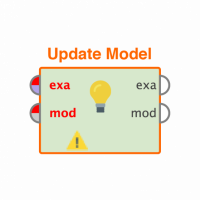The Altair Community is migrating to a new platform to provide a better experience for you. In preparation for the migration, the Altair Community is on read-only mode from October 28 - November 6, 2024. Technical support via cases will continue to work as is. For any urgent requests from Students/Faculty members, please submit the form linked here
Time series data with binary column analysis
Hello there , i m trying to generate two timestamp columns (from,to) out of the table given below in such a way that whenever there is '1' after '0' in the resultant column that particular timestamp should copied to the from column and whenever there is '0' after '1' that particular timestamp should be copied to the "to" column, this process should continue until all batches of '1' are found out. Can anyone help
Resultant Date-time
0 31/12/2017 22:55
0 31/12/2017 22:27
1 31/12/2017 22:17
1 31/12/2017 21:55
0 31/12/2017 20:48
0 31/12/2017 11:03
1 31/12/2017 09:58
1 31/12/2017 09:52
1 31/12/2017 09:16
1 31/12/2017 08:11
1 31/12/2017 07:55
1 31/12/2017 06:54
1 31/12/2017 04:10
1 30/12/2017 12:15
1 30/12/2017 11:20
1 30/12/2017 10:50
1 30/12/2017 05:40
1 30/12/2017 04:49
1 30/12/2017 04:30
0 30/12/2017 04:00
0 30/12/2017 02:34
0 29/12/2017 23:02
1 29/12/2017 18:38
1 29/12/2017 08:04
1 29/12/2017 01:30
1 28/12/2017 23:59
1 28/12/2017 16:22
1 28/12/2017 14:43
1 28/12/2017 14:39
1 28/12/2017 14:39
1 28/12/2017 14:02
0 28/12/2017 13:46
0 28/12/2017 13:28
0 28/12/2017 12:51
0 28/12/2017 12:45
0 28/12/2017 12:24
1 28/12/2017 12:06
0
Best Answers
-
 CKönig
Employee-RapidMiner, Member Posts: 70
CKönig
Employee-RapidMiner, Member Posts: 70  RM Team Member
Hey and welcome to the community.
RM Team Member
Hey and welcome to the community.
If I understand your question correctly, you are trying to find the start and end date of the periods, during which the Resultant attribute has the value 1.The combination of Differentiate and Integrate (from Time Series) can find changes in an attribute and build a unique id per section without change. Afterwards a simple Aggregation finds last and first date.The same functionality is bundled in the Generate Session ID operator from the Operator Toolbox extension, using "none" as the gap unit.
See the example process attached.
Have a nice weekend!1 -
 SID101098
Member Posts: 3
SID101098
Member Posts: 3  Learner I
Hello there
Learner I
Hello there
Thanks for the solution it worked perfectly!
Cheers2

